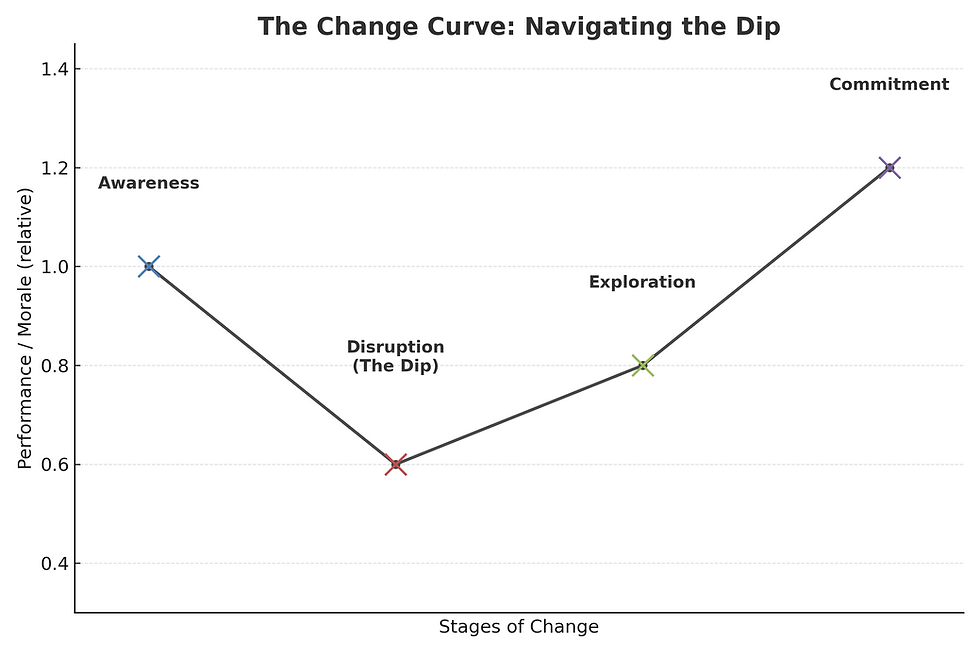The Power of Vulnerability: Why Leaders Should Embrace Openness with Their Staff
- Amber Parker
- Sep 1, 2024
- 3 min read
An Executive Director or CEO is often viewed as one who requires unwavering strength, resilience, and an ability to solve complex challenges with confidence. However, in the pursuit of these qualities, there is a danger of overlooking a vital aspect of leadership: vulnerability. Embracing vulnerability isn't a sign of weakness; it's a crucial aspect of authentic leadership that can strengthen staff morale, foster buy-in, and lead to better problem-solving.
The Case for Vulnerability
As a young leader in my 30’s I had a very different viewpoint on vulnerability than I do now. I thought that a leader had to be a rock. A person who could handle all problems without breaking a sweat and never allowed anyone else to see them sweat. Someone who shared none of the problems and worries inherent to a nonprofit organization with their staff, because they didn’t want to worry them.
Now, at 53, I have a vastly different viewpoint that came from experience as well as good role models like Brene' Brown, a renowned researcher on vulnerability and leadership, who says, "Vulnerability is not winning or losing; it's having the courage to show up and be seen when we have no control over the outcome." For an Executive Director, this means being open with your team about your thought process, the challenges ahead, and even your concerns. It’s about acknowledging that you don’t have all the answers and that their input and support are not just welcomed but necessary.
When leaders allow themselves to be vulnerable, they humanize their role. They move from being seen as distant figureheads to being relatable, approachable, and, most importantly, human. This can create a sense of psychological safety among staff, encouraging them to speak up, share their ideas, and feel genuinely invested in the organization's success.
Enhancing Staff Morale and Buy-In
Openness in leadership has a direct impact on staff morale. When team members understand the challenges their leader is facing, they are more likely to rally together in support. It fosters a sense of shared purpose and collective responsibility. As Brene' Brown puts it, "Vulnerability is the birthplace of innovation, creativity, and change." When an Executive Director asks for help in problem-solving or simply in providing support, it empowers staff to take ownership of the solution.
Moreover, when leaders share their concerns and thought processes, it invites staff into the decision-making process. This inclusion can significantly increase buy-in, as team members feel that their voices are heard and valued. They become active participants in steering the organization forward rather than passive recipients of decisions made behind closed doors.
The Balance of Vulnerability and Competence
While vulnerability is essential, it’s crucial for leaders to strike a balance. There is a fine line between being open and causing undue concern among staff. Leaders must be discerning about what and how much they share. Transparency should never cross into oversharing, especially when the issues at hand are beyond the staff's control or understanding. The goal is to be open enough to build trust and collaboration but not so open that it creates anxiety or a lack of confidence in leadership.
Brene' Brown cautions that "vulnerability minus boundaries is not vulnerability." It’s essential for an Executive Director to maintain those boundaries, ensuring that the sharing of challenges or concerns is done in a way that strengthens, rather than diminishes, the staff’s trust and confidence in leadership.
Building Trust Through Openness
Trust is the foundation of any successful team. By letting more people into your thought process and challenges, you build a culture of trust. This doesn’t mean burdening your staff with every worry or uncertainty but rather sharing enough to show that you value their input and that you’re all in this together.
When staff see that their leader is willing to be vulnerable, they are more likely to reciprocate, leading to a more open and collaborative work environment. This mutual vulnerability fosters deeper connections, greater loyalty, and a stronger commitment to the organization's mission.
Being a competent leader doesn’t mean having all the answers or appearing invulnerable. In fact, true competence in leadership often comes from knowing when to let others in, when to ask for help, and when to admit that you don’t have all the answers. Showing courage through vulnerability will yield the best and most flavorful fruit.




Comments